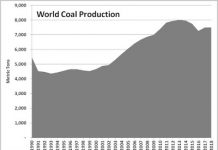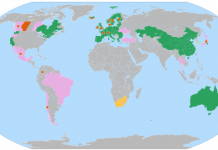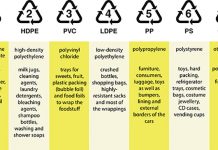The World Bank Carbon Finance Unit recently released its Q3 2006 update for the global market for CO2 emissions (the carbon market). The document, entitled “State and Trends of the Carbon Market 2006��? (PDF file), contains some pretty interesting information that makes it difficult not to be bullish on the future of emissions trading. Here are some numbers. At the end of Q3 2006, the total value of the market stood at $21.5 billion, up 94% on the whole of 2005 ($11.1 billion). Unsurprisingly, Europe, with its Emissions Trading Scheme, continues to account for the bulk (~99%) of the so-called “allowances��? market (I’ll come back to this in a minute). Growth on the Chicago Climate Exchange is also pretty healthy, although the absolute numbers are nothing to write home about just yet. The value of the market currently stands at $27.2 million, up from $2.83 million for the whole of 2005 – I’ll let you do the math. Trading on the CCX has so far been entirely voluntary, but the Democrats’ recent victory takes regulation-driven trading one step closer. Federally-imposed CO2 caps with trading would push the value of the US emissions market far above that of Europe’s. Even without action on climate change at the federal level, the World Bank identifies California’s AB 32 and the RGGI (PDF file) as two of the three most significant global regulatory developments to watch out for in the next few years. The global carbon market is currently broken down into 2 sub-markets: (a) the “allowances��? market (~89% of total market value at Q3’06) and (b) the “project-based��? market (the remaining 11%). In a nutshell, the “allowances��? market is created when emitters in a jurisdiction where CO2 emissions are capped trade rights to emit on exchanges like the CCX or in OTC markets. The “project-based��? market exists because the Kyoto protocol allows entities (e.g. emitters, project developers, financial institutions, etc.) to invest in projects in emerging economies that generate CO2 emissions reductions there, convert those reductions into “allowances��?, and then bring the “allowances��? back to jurisdictions where emissions are regulated to be sold in CO2 markets. By the World Bank’s own admission, reliable data on the project-based market is relatively hard to come by as there is often a strategic angle to such investments, leading companies to be pretty secretive about them. That market is currently worth about $2.4 billion, 60% of which is attributable to investments in China. Now the interesting thing to note about the project-based market is that while its size is not growing as rapidly as that of the carbon market as a whole, the sophistication of market players is increasing. For instance, while entities on the supply side used to be primarily concerned with generating and selling CO2 allowances, there is now evidence that the spectrum of activities they engage in is widening to include more traditional activities like debt, equipment sales, other commodity sales, etc. The World Bank notes that pure play CO2 sellers are loosing ground to more diversified entities that seek to create income streams from the range of options available to them, partly to hedge against the volatility of CO2 prices. On the flipside of this, don’t be surprised if conventional project financiers in emerging markets begin integrating “carbon income��? in their valuation models and DCF analyses for certain categories of projects. This has the potential to create the right incentive, at the margin, to make it economical to go with the cleaner but more expensive technological option. The other interesting trend highlighted in the report is the increased involvement of investor-owned insurance companies in these markets to help shield against the wealth of risks that exist both in carbon markets and in investing in emerging economies. Leading players named by the report include Swiss Re, Munich Re, AIG and Allianz, among others. (DISCLOSURE: We do not own, or otherwise have financial interests in, any of these companies) Now I know this may not sound like anything to get too excited about at this point, but investors in the US really should have their sight set on this stuff. Besides the state-based initiatives I’ve discussed before, federally-imposed caps on CO2 emissions look increasingly likely. AltEnergyStocks.com will continue to follow developments in the emissions trading space for our readers, as we believe significant opportunities should arise in the next few years.
Note: If you are not familiar with the terms ‘carbon markets’ and ’emissions trading’ or would like to know more, I suggest reading or looking over the following: An Overview of Carbon Markets and Emissions Trading, Carbon Credit – The Next Big Thing, and Kyoto, Carbon Credits, and a Big Market for Cleantech .






Great post Charlie
Fantastic introduction to the carbon markets for beginners – with some good and relevant links.
Will be watching with further interest – even though I’m not an economist … purely because “This has the potential to create the right incentive, at the margin, to make it economical to go with the cleaner but more expensive technological option.” … sounds interesting.